|
Report from Olympia | June 10, 2015
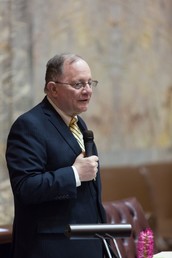 Dear Friends and Neighbors,
It’s frustrating that nearly two weeks into the second
special legislative session, the Legislature has yet to reach agreement on a
new budget. At the same time there has been a measure of progress which
suggests things are beginning to come together.
Late last month, before the second special session began May
29, the Senate released a new budget proposal that reflects the latest revenue
forecast from mid-May. That forecast is even more positive than the February
forecast, allowing our updated proposal to address many of the concerns House
Democrats claimed they had with the initial Senate plan.
House Democrats have since responded to our updated proposal
with one of their own. Their tax package is smaller because it no longer
proposes an increase in the business-and-occupation tax rate on service businesses,
or the repeal of various job-creation incentives.
Taken together, the two revised budget proposals represent a
measure of progress – except that the latest House proposal still relies on a
big new capital-gains tax that would collect nearly $2 billion by the end of
the 2017-19 budget cycle. Please keep reading for more on the situation and our
Senate majority’s continuing effort toward a no-new-taxes budget.
As always, I welcome your input on this and any other issues
relating to state government. Please feel free to contact me anytime via email
or by calling our district office at (509) 921-2460.
Thank you, as always, for the continued opportunity to serve
you in the state Senate.
Best
Regards,
|

Senator
Mike Padden


Repaving work on an eight-mile section of State Route 290
(Trent Avenue) from Sullivan Road to the Idaho state line will get started in
mid-June. This section of highway in east Spokane County is a busy commute
route from north Idaho into the Spokane metro area.
This project includes some work on two City of Spokane
Valley streets. The contractor will resurface Sullivan Road from Trent to
Wellesley avenues, and Wellesley Avenue from Progress to Sullivan roads. The
city street work also includes drainage work, new sidewalks, illumination and
traffic signal improvements.
The project will begin by June 15 and should take about 12
weeks to complete. To reduce the impacts on commuters, paving from Barker to
Starr roads will be done at night from 6 p.m. to 6 a.m. with flaggers and pilot
cars directing single-lane, alternating traffic.
When work gets underway, drivers can keep up to date on
project progress by visiting the Weekly
Construction and Traffic Update website and the WSDOT Traffic
Alerts website.
|

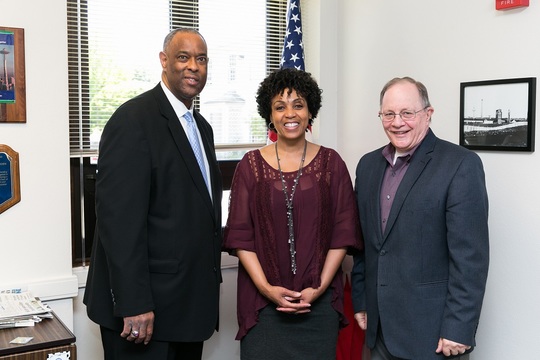 Senator Padden welcomes WSP Chief John Batiste and Capt. Monica Alexander, who oversees government and media relations for the patrol.
Chief John R. Batiste is the 21st chief of the Washington
State Patrol. His law-enforcement career began with the WSP in 1976; he was
originally appointed chief in 2005 by former Gov. Christine Gregoire and re-appointed
by Governor Inslee in 2013.
As chair of the Senate Law and Justice Committee, I
have had frequent interaction with Chief Batiste; he stopped by the office yesterday
(Tuesday) to discuss progress on a range of public-safety concerns, starting
with our efforts to save lives by reducing impaired driving – which includes getting
tougher on repeat DUI offenders.

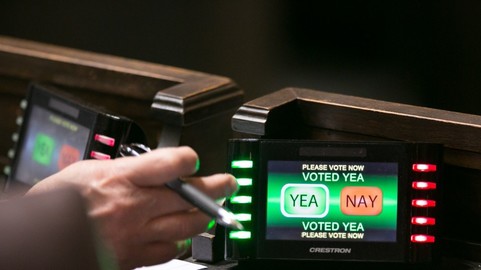 |
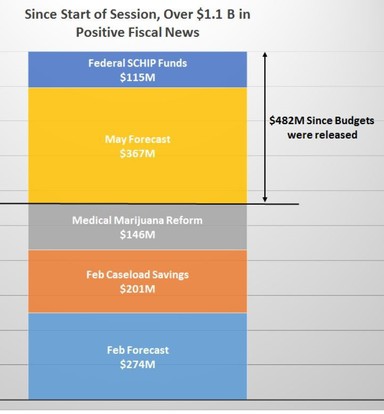
A lot has been made of the June 30 budget deadline – the
final day of the state’s current fiscal biennium. If there’s no 2015-17 budget
in place by then, some state agencies would partially or completely shut down.
While that may make for interesting news stories, the House and Senate are not
as far apart in their budget proposals as one might think.
As both the Senate and the House have released their latest
proposals, it is now easy to compare where both sides are.
-
On
the level of spending, the latest revenue forecast has allowed the Senate to
reduce the differences between its budget spending level and that of the House.
The House budget spends $38.37 billion, a $4.71 billion (or 14 percent)
increase over the current budget. The Senate plan would spend $37.74 billion,
which would be a 12 percent increase. There
are some Republican lawmakers, like myself, who view the level of spending in
both plans as too much. Clearly, the difference between the two is no
reason for a government shutdown.
-
Both
budgets fund the state employees’ collective bargaining agreement, although
Senate approval is contingent upon passage of SB 6126, a reform bill that would
open up negotiations to public scrutiny in the future.
-
Both budgets
provide teachers with a cost of living increase in their pay. While the Senate
budget fully funds the voter-approved pay increases, the House spends $154
million above those levels and another $68 million for bilingual instruction
and “family engagement coordinators.”
- When
it comes to higher education, the Senate
is proposing a 25-percent average reduction in tuition at in-state public 4-year
institutions. This would essentially result in one of the largest middle-class tax cuts in state history. The House
budget includes a freeze in tuition, but plans to fund it only if a $400
million capital-gains income tax is approved.
In almost every area of the budget, the differences between
the Senate and House proposals are slim, and in any other year, budget writers
would be able to reach agreement on those small differences.
There is one significant difference between the two plans. The Senate proposal has no tax increases,
while the House plan still includes
a capital-gains tax of $570 million in 2015-17 and $1.27 billion in 2017-19.
With so few differences between the two sides, I am hopeful
that we will soon reach an agreement.
|

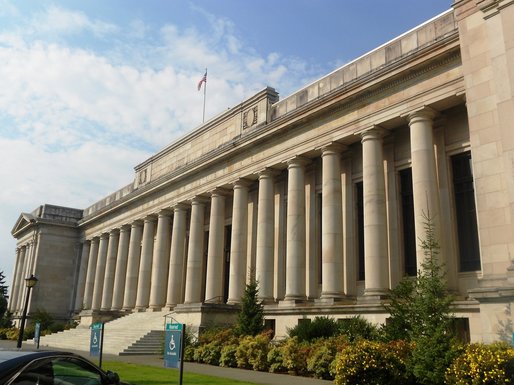 |
In McCleary et al vs.
The State of Washington, an advocacy group called the Network for
Excellence in Washington Schools sued the people of Washington claiming that
the state had failed to fully fund basic education. In January 2012, the
Supreme Court held the state had failed to meet its constitutional duty to fund
education, and maintained continuing jurisdiction over the case.
Based on Freedom of Information Act requests made to
Washington’s largest school districts, the non-partisan Washington Policy
Center recently released a report that shows the McCleary case was largely funded by public-school teachers and the
school districts themselves.The dollar figures paid by the school districts and public
school teachers are staggering.
You can read the full report by clicking
here.
 
 On Friday, the news broke that Washington State University
President Elson Floyd will be taking a medical leave from his duties at the
university to battle cancer. WSU Provost and Executive Vice President Dan Bernardo
is expected to fill in for Floyd during his leave.
Please keep Elson Floyd and his family in your prayers
during this difficult time. He has been a strong advocate for WSU and for
eastern Washington, and it is my hope that he will be able to resume that
critical role in our community shortly.
* * *
|
|
























